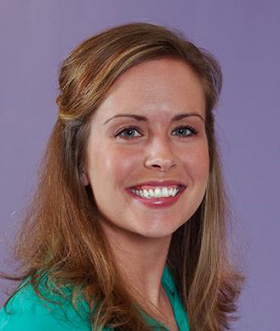Complex rehab workflow bends to meet patients where they’re at

By Liz Beaulieu, Editor
Updated 12:59 PM CST, Fri February 5, 2021
 BALTIMORE – Erin Michael and Meredith Linden, both physical therapists, envision a hybrid model for evaluating patients for complex rehab technology post-pandemic that melds the best of in-clinic and remote visits.
BALTIMORE – Erin Michael and Meredith Linden, both physical therapists, envision a hybrid model for evaluating patients for complex rehab technology post-pandemic that melds the best of in-clinic and remote visits.
Here’s what Michael, PT, DPT, ATP/SMS, manager of patient advocacy and special programs at the International Center for Spinal Cord Injury at the Kennedy Krieger Institute in Baltimore, and Linden, PT, DPT, ATP/SMS, a clinical specialist at the center, had to say about how their professional worlds were turned upside down last spring when the pandemic struck, and how they’re “Making Lemons into Lemonade,” the title of their NRRTS webinar on Feb. 17.
HME News: How has what you do changed due to the pandemic?
Erin Michael: A lot has changed in that we can’t be as hands-on in the same way. We had to drastically reduce the number of staff in our treatment gym because of the square footage regulations (related to COVID-19). Our job has been hands-on our whole career – 12 and a half years – so transitioning on a moment’s warning wasn’t what any of us signed up for. But working as a PT in a clinic for a larger health care system – if there’s one thing you learn, it’s how to be adaptive. The biggest thing has been learning how to do our jobs through computer screens and phones.
HME: Have providers been responsive to also using remote services and telehealth for evaluations and deliveries?
Meredith Linden: Like therapists, they have jumped in and taken on the new challenge. One thing we’ve both learned – the clinicians and the suppliers – is that we need to improve our communication and make sure it’s really explicit for things to go well. When we’re in a clinic, we have all the stuff we need right there down the hall. When we’re doing this in a person’s home, all the stuff has to be there.
Michael: That’s definitely the biggest challenge: When you’re using telehealth, you have to plan ahead. That includes making sure there is an additional person in the home that can support the supplier. We need someone – a caregiver or a family member – to be there to be the hands of the therapist. You also have to have a plan if video fails or you can’t hear each other.
HME: What has been a positive aspect of this new workflow?
Michael: We get a better understanding of the home environment, and we’re better able to make sure this equipment will truly function for them. In a session the other day, I saw how the patient’s doorway was really difficult to manage and impacted her ability to get in and out of the house. We were able to problem-solve that if they brought her in backward there was no issue. If I had done the evaluation in person, I’m not even sure they would have brought that up.
HME: How will your experiences for the past year affect the provision of complex rehab permanently?
Michael: I think it’s our hope that some sort of hybrid model will stick around. We do feel seeing the patient in person is best-case scenario, but we’ve learned from the work and research being done, that, for example, patients in rural communities have trouble accessing services. Even for patients in cities, transportation fails them five out of 10 times. Maybe we (use remote services and telehealth) to go to those patients instead. We also really like the home assessment piece. Even if we’re seeing a patient in the clinic, maybe we “follow” the supplier around when he or she goes to the home. Maybe we incorporate 15-minute check-ins by video after a certain time, so we can fix something that has come up, instead of them having to come to clinic.
Comments